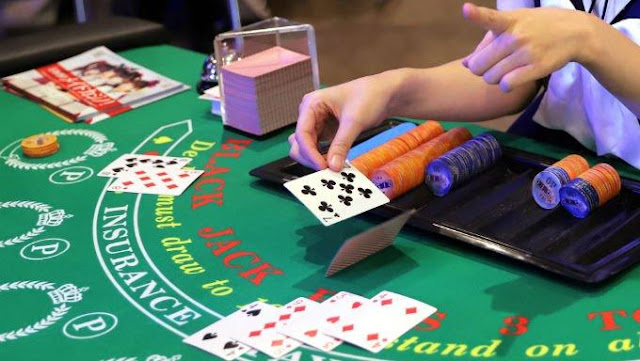What are the basic types of blackjack strategies?
What are the basic types of blackjack strategies?
When you play blackjack, you have five possible actions as a player. You can hit, stand, double, split or fold. We cover each of these terms in more detail in our How to Play Blackjack guide. No matter what action you take, your goal is to get your hand (or hands in certain scenarios) as close to 21 as possible without going over. 온라인카지노
While hit, stand, double down, and split are available at every blackjack table, surrender is a less common option offered only by some casinos, both online and brick-and-mortar. 카지노사이트
Basic strategy in blackjack is based on knowing which action is best based on your hand and the dealer's hand. Here is an overview of the basic strategies you can use to increase your chances of winning.
When to intervene
You should usually hit any hand that doesn't have an ace and can't fold. Always make sure that the hand should not be split or doubled first (see these specific sections for more details on splits and doubling).
Continue from there until your hand reaches 17 if the dealer's upcard is a seven or higher. You should also hit when you have 12 against the dealer if his upcard is a two or three. Be sure to always hit or double a soft 17 (a hand totaling 17 that includes an ace) if the table rules allow it.
The most frequently misplayed hand is a soft 18 (a hand totaling 18 that includes an ace). It should be hit against a nine, ten, or ace, and doubled against all other dealer's cards except sevens or eights.
When to double down
Doubling down can be extremely beneficial to players if done correctly. There are certain scenarios where doubling down will give you a significant strategic advantage and a chance to double your winnings at the end of the game.
You should double to 11 against any dealer except an ace. If your hand is worth 10 points, double if the dealer shows any card two through nine. If you have nine points, double if the dealer shows three to six points.
Soft hands of 18 or lower, meaning an ace and a seven or lower, should double over the dealer's five or six. Soft 15-18 should be doubled against a four, while soft 17 and 18 should be doubled against a dealer's three to six. Remember that a "soft" hand is a hand containing an ace that can count as either a 1 or an 11.
When to split up
Always deal eights and aces. Never divide fives or 10s. From there, nines should split against everything except the dealer's seven, 10, or ace. Twos, threes and sevens should be dealt against the upcard dealer from two to seven. Sixes should be split against twos to sixes. Fours should split against fours through sixes, but only if doubling is allowed after the split.
Improve your Blackjack strategy for free
Still confused? Don't worry, you can try out these strategies with a free online blackjack game to better understand when you should take a particular action.
Blackjack Odds
There are two basic types of blackjack tables: 3:2 tables and 6:5 tables. These numbers are the odds that determine the payouts if the player hits blackjack.
If you bet $10 on a 3:2 table and hit blackjack, you will receive $15, or 1.5 times your original bet. At a 6:5 table, the same bet would only pay $12 if you hit blackjack, because for every $5 bet, you get $6 back.
Simply put, 6:5 tables pay less overall and are less beneficial to players. Avoid the 6:5 tables if you can and stick to the 3:2 payouts instead, which are better for you as a player.
The edge of the house
House edge refers to the advantage the casino has over you in any particular game. It is written as a percentage. For example, blackjack without a basic strategy usually has a house edge of 1.5%.
In dollars and cents, this means that for every $1 you spend, the casino earns $0.015 from you. You get $0.985 back. Since most live blackjack games have a minimum bet of $5, this means they earn $0.08 per player per hand. This is meant to represent a general trend, not a guaranteed result. Over time, the casino is statistically likely to gain an advantage over thousands of hands. So even if the casino has an advantage, it's still possible for individual payers to leave the table with more money than they had when they sat down.
What can change the edge of the house?
Small adjustments to the game of blackjack can change the house edge. Here are some common factors that affect the casino's advantage over players:
Number of decks: The more decks in play, the harder it is to make a blackjack, increasing the house edge.
Player options: This includes splitting, (re)distributing aces, doubling up, and surrendering. Removing these options increases the house edge.
Dealer hits Soft 17: Hitting a soft 17 (against standing) increases the house edge.
Blackjack payout: Winning 6:5 or 1:1 blackjack increases the house edge compared to the standard 3:2 ratio.
Basic Strategy: Understanding basic strategy can reduce the house edge to as little as 0.05%. 안전한카지노사이트




댓글
댓글 쓰기